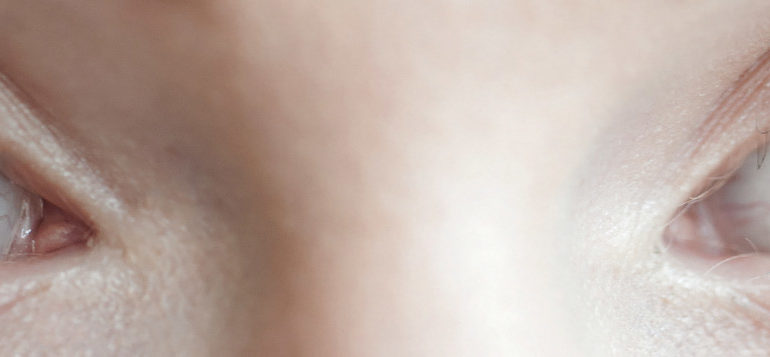The IVDR enters into force on 26 May 2022
With the IVDR coming into force on 26 May 2022, there are many questions and far-reaching changes for IVD manufacturers. Are you also facing the difficult task of implementing (EU) 2017/746 in your company? Do you still have questions about the implementation despite the little time left? Together we will find answers to urgent questions.
Date of application of the IVDR incl. graded deadlines
On 26.05.2022, Regulation (EU) 2017/746 on in vitro diagnostic medical devices will replace the previous Directive 98/79/EC (IVDD). With the start of application, some in-vitro diagnostic devices fall into higher levels and must be declared compliant for the first time with the involvement of a Notified Body. Due to the now phased introduction (Regulation (EU) 2022/112), the transition periods for all IVDs apply as follows:
For products that already required the involvement of a Notified Body under the IVDD, 26 May 2025 is a key deadline. Still valid IVDD certificates expire on this date at the latest.
For devices that are newly classified by the IVDR and now require the involvement of a Notified Body for the first time, the following deadlines apply with regard to the transition periods:
- 05.2025 – Class D
- 05.2026 – Class C
- 05.2027 – Class B
- 05.2027 – Sterile Class A
Until these deadlines, products can be placed on the market with a declaration of conformity according to 98/79/EC. However, the declaration of conformity must be issued before 26.05.2022 and there may be no significant changes to the design and purpose of the medical devices before the end of the transition period – please take note of the brand new MDCG Guidance 2022-6.
The phased introduction of the IVDR means no change compared to the previous requirements of the IVDR for in vitro diagnostic medical devices that do not require the involvement of a Notified Body. For them, the IVDR will be fully applicable from 26.05.2022. This concerns
- Class A non-sterile devices
- “new” in vitro diagnostic medical devices for which no certificate or declaration of conformity has yet been issued in accordance with Directive 98/79/EC (IVDD).
You can find more details in our article Has the penny dropped?
Handling IVD products that are still in stock
Manufacturers of in-vitro diagnostics may still have well-filled warehouses. Then the question may arise on the last few metres how to proceed with the remaining goods. The good news is that all products can be placed on the market in accordance with the cut-off date rules mentioned at the beginning. After that, however, placing on the market under Directive 98/79/EC (IVDD) is no longer possible. Therefore, manufacturers might be interested in different approaches or adjustments to the market strategy:
- Relabelling of existing goods after the change to the IVDR, provided it is the identical product version
- Sales to non-EU countries in which the CE mark according to IVDD is not relevant
- Placing on the market, e.g. by sale / provision to the dealer before the deadline – the class-dependent deadlines for provision or commissioning, which mostly end one year after the respective transitional periods, should be taken into account.
Of course, each manufacturer would have to examine these approaches in each individual case, not only from the perspective of the IVDR, but also with regard to tax and contract law as well as national regulations. To this end, manufacturers should carefully consider the legal situation and possible solutions at an early stage.
The term “placing on the market” is defined as follows:
- IVDD: “placing on the market” means the first making available in return for payment or free of charge of a device other than a device intended for performance evaluation with a view to distribution and/or use on the Community market, regardless of whether it is new or fully refurbished
- IVDR: “Placing on the market” means the first making available of a device, other than a device for performance study, on the Union market;
- IVDR ‘making available on the market’ means any supply of a device, other than a device for performance study, for distribution, consumption or use on the Union market in the course of a commercial activity, whether in return for payment or free of charge;
Post-market surveillance, vigilance and reporting of all IVDs
Irrespective of the transition periods mentioned depending on the class, the following requirements apply to all manufacturers placing devices on the market that fall under the definitions of the IVDR from 26.05.2022:
- Registration of products – Article 26
- Registration of economic operators – Article 27
- Post-market surveillance – Articles 78 to 81
- Vigilance – Articles 82 to 87
- Market surveillance – Articles 88 to 95
However, according to the current EU Joint Implementation Plan (March 2022), this definition is rather general and specific implementation requirements are to be developed. With regard to the MDCG 2021-25 guidance document available for MDR products, it is explained that this cannot be transferred to IVDs. A separate guidance document for legacy IVDs is therefore under development.
Nevertheless, it does not hurt to have a look at the MDCG 2021-25 document to keep an eye on possible restrictions or deviations. For example, for MDD legacy devices that represent a high-risk product, Article 32 “Summary report on safety and clinical performance” is not required. In view of the large number of IVDs that have so far managed without a Notified Body, one can also expect an exclusion for affected legacy devices in the case of IVDs. However, this should not dissuade manufacturers who want to market their Class C and D devices under the IVDR in the future from collecting data. Sooner or later, the report will be necessary, but it is not yet clear exactly when.
For registration in EUDAMED, the current restrictions apply due to the lack of completion of the database. However, it is possible to register products and manufacturers or economic operators. Existing DIMDI/DMIDS notifications must also be replaced by EUDAMED notifications for legacy devices. You can find more information on this in our blog articles on the topic of economic operators and EUDAMED modules.
Brief overview of the performance assessment and SSCP for IVDs
With regard to the Summary of Safety and Clinical Performance (SSCP), there is still no clarity for legacy devices. What is clear, however, is that a performance evaluation will be necessary for all in vitro diagnostic devices and their accessories that fall under the IVDR.
This is defined as follows:
- assessment and analysis of data to establish or verify the scientific validity, the analytical and, where applicable, the clinical performance of a device
This means that scientific validity as well as analytical performance must always be assessed. The assessment of clinical performance may or may not be required depending on the product characteristics. Together, these data form the clinical evidence. A guideline for preparing the performance evaluation or obtaining the clinical evidence according to Article 56 and Annex XIII can be found in MDCG 2022-2.
In general, it can be said that the components are comparable to those of the MDR. Required are:
- Performance Evaluation Plan
- Performance Evaluation Report
- Post-Market Performance Follow-Up Plan
Together with the post-market surveillance report and the SSCP, they also form a complex web of data sets, interpretation of the same and update cycles in the area of IVDs. In the end, the risk-benefit assessment must be positive.
For the Summary Safety and Performance Report (SSCP for short, Article 29), which is required for IVDs of risk classes C and D, there is no relevant template so far. This was also recognised in the Joint Implementation Plan in March 2022 and defined as a pressing task. However, the assessment also gives an insight into the direction to be expected:
- In particular, the SSCP shall contain a summary of the performance evaluation and relevant information on the post-market follow-up of the performance, in a way that is understandable to the intended user and, where appropriate, to the patient. This document is important from the point of view of transparency, as it is intended to present to the public the most relevant information on the performance of the device in an accessible form. As this is a new regulation, guidance on how to structure the summary of safety and performance needs to be developed. This should build on the work that has already taken place on the corresponding summary of safety and clinical performance for medical devices in the MDCG CIE WG.
In addition, there are specific guidance documents for performance evaluations of IVDs with software and SARS-CoV-2 IVDs.
Kits, sets and combinations
An in-vitro diagnostic procedure usually requires the use of several components. At the latest since the beginning of the Corona pandemic, this should be known to every user in the context of self-tests. For this reason, the term “kit” is also used in the definition of “in vitro diagnostic product”. The kit itself is defined as follows:
- a group of components packaged together and intended for use in the performance of a specific in vitro study, or a part thereof;
The kit receives its own UDI. If components of the kit are also available on the market as separate products, these must also comply with the requirements of the Regulation on their own, especially in the area of labelling and UDI.
Now the clever manufacturer may notice and throw Article 22 of the MDR in the ring. This applies when products from different regulations (e.g. MDR and IVDR) and possibly also manufacturers are placed on the market together.
However, it is still unclear by which procedure pure IVD kits from different manufacturers can be combined and placed on the market. Unfortunately, this topic is not addressed in the Joint Action Plan and will presumably only be brought to the fore by actual problem cases. Until then, one can wish for a suitable MDCG Guidance badly.
Notified bodies and the IVDR
For IVD manufacturers, there are certainly still many construction sites, especially since they were often not “considered” in the past. However, the large number of new MDCG Guidances and the graded implementation clearly indicate that the concerns of manufacturers are now increasingly addressed. Despite the EU’s efforts, there are only seven bodies notified under the IVDR as of the end of April 2022.
Considering the large number of IVDs that require the involvement of a Notified Body for the first time under the IVDR, one can already feel queasy. The Joint Action Plan also sees a need for further action here in addition to the already defined graduation. Therefore, three measures have been defined that are of priority:
- Provision of national experts for the joint assessment of notified bodies
- Considerations on how Notified Bodies can carry out conformity assessments under COVID 19 conditions
- Discussion in the Member States on increasing the capacity of Notified Bodies
In addition to these measures, it is to be hoped that further Notified Bodies, which are currently waiting for their notification according to (EU) 2017/746, will be designated in the near future.
And affected manufacturers? As far as possible (and provided a notification is available), they should contact their existing Notified Body (IVDD or EN ISO 13485 certification) to have their product assessment planned or to discuss possible alternative scenarios.
Support for the implementation of the IVDR
Have you already come a long way as a producer and thought you had reached your goal? Do you still lack practice in preparing a performance assessment? Do you have further questions about conformity according to IVDR? Contact us, we will be happy to advise you with a view to your personal situation and support you in the tasks ahead.
Please note that all details and listings do not claim to be complete, are without guarantee and are for information purposes only.




